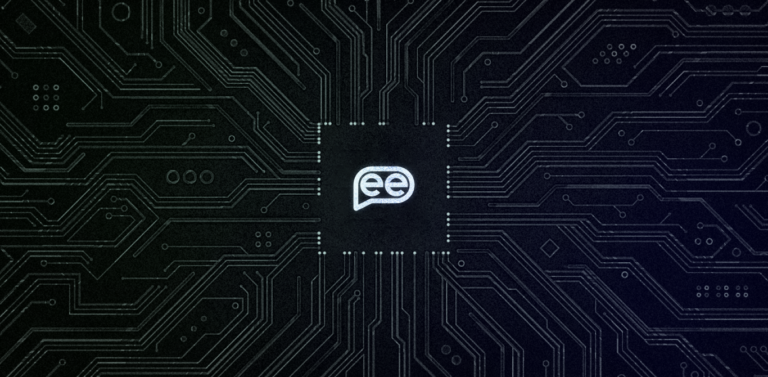Today’s business world is data and technology-driven. That’s precisely why it’s time for HR analytics in recruitment to come to the forefront too. With the ongoing changes in the workplace, there is a growing need to improve efficiency and reduce operational costs within organizations. This very fact is driving the demand for HR analytics across several industries.
The task of focusing on employee engagement and experience while producing satisfactory revenue is an arduous task without the assistance of the right technology. Integrating analytics in recruitment will assist your HR team in making more accurate decisions. With a tech-savvy recruitment process, you can achieve workforce optimization and analyze metrics to bring improvements to the workforce.
Companies lose money and time because of poorly filled job vacancies. But using data-driven HR analytics in talent acquisition can paint a clear picture of how your prospective employees may contribute to your company’s growth. Whether bulk onboarding or talent evaluation, HR analytics can access and analyze an enormous amount of unstructured data in real time. This means you can structure and implement actionable business decisions to recruit and fully utilize the talent in your organization.
Let us understand what HR analytics are, their benefits, and how to implement them for optimum results.
What are HR metrics and analytics in recruitment?
HR analytics in recruitment uses data to derive accurate reports. It is the process of collecting and analyzing recruitment data to offer consistent feedback on the effectiveness of HR initiatives in hiring the right talents. It helps the company in three aspects- understanding the candidates, effectively applying resources, and making strategic decisions.
HR metrics, on the other hand, are specific data sets that measure the performance and efficiency of the workforce. They provide insights into the synergy between the recruitment process and the company’s growth. HR metrics are based on measurable and solid data sets and portray a clear picture of the operations and success rate through the derived numbers.
The current state of how HRs look at data

While some companies are leaning toward a more algorithm-based, data-driven approach to HR operations, many companies still have not opted for HR analytics for recruitment. This may provide the familiarity of total human intervention but will only hinder the company’s growth.
The business world is changing, and the volume of applications HRs have to deal with is massive. The hiring process is prone to errors without proper HR analytics in recruitment. On average, companies lose over 14,900 USD only because of poorly filled job vacancies. There is a constant increase in the cost of employee benefits and other factors that contribute to employee satisfaction. But hiring the wrong individuals will not let those expenditures turn into growth or profit.
It is time to change how HR departments deal with data. The process needs to be more tech-savvy and adapt to the complex needs of the modern-day HR ecosystem.
The key benefits include:
- A smooth and informed hiring process
- Automated emails for better candidate engagement
- More effective job postings based on reliable data
- Higher retention rate
- Lower dropout rates before joining
- Effective talent acquisitions
- Data-driven performance review systems
A modern HR department needs to align its operation with technology. A total renewal in the hiring process with the help of HR analytics can hugely contribute to your company’s success.
Key metrics that HRs should consider while planning their recruitment strategy

Initiating a recruitment process that saves costs and produces positive results can often become a complex and overwhelming task for your HR team. While setting up processes for the effective use of HR analytics in recruitment, considering specific metrics is of absolute importance. Let us look at some of the metrics the HR team needs to keep in mind.
- Time-to-hire: The total time taken from the beginning of the candidate’s journey to the finalization of recruitment is an essential metric for recruitment. This ranges from when candidates enter the talent acquisition pipeline to the day company finalizes their employment contract. Identifying the bottlenecks for an effective recruitment strategy minimizes the overall time-to-hire.
- Quality of the hire: Effective recruitment process includes quick hiring and recruiting the right people. The quality of hire is a performance-based metric that gives data based on first-year performance ratings of new hires and tracks the overall success of the hiring process. This metric is essential for the comparative quality analysis of a new batch of hires. Companies can judge whether the right people are entering the talent acquisition pipeline through this metric.
- Cost-to-hire: Cost-to-hire is the overall expenditure sustained during the hiring process divided by the total number of hired candidates. This metric portrays your company’s internal and external spending on talent acquisition. With a centralized data storage platform, recruiters can significantly increase recruitment efficiency. The subsequent increase in revenue can be compared by aggregating the cost-to-hire of all new batches, reflecting the effectiveness of the recruitment process.
- Advertisement cost: The ratio of the expenditure on each job posting and the success rate of the interview process can help you manage and navigate advertising costs more productively. Such aggregated data can be visualized and leveraged for increased efficiency in HR expenditure.
- Source of candidates: This metric will provide information on how and where the candidate came across a particular job posting. Depending on how successful the recruitment process turns out to be, your company can judge the effectiveness of different channels and platforms in acquiring new talents.
- Application completion rate: If the application form in your job posting is not engaging enough, candidates will tend to leave them incomplete. But by acquiring an application completion rate, your HR department can point out the parts with the highest dropout rates and leverage that information to make the form more engaging for the candidates.
Difference between actionable insights and heaps of data

While collecting heaps of data may provide a more significant scope of data analysis, very little of it turns out to be actionable. Data that does not impact productivity just takes up space.
Actionable insight is important from HR analytics. A proper insight into the hiring process contains data that accurately reflects the trends in recruitment. But very frequently, companies lose sight of decision-making among the mountains of statistics.
A tech-savvy company uses HR analytics to turn data into actionable insight that increases the company’s growth. They bridge gaps between collected data and effective strategy.
Key points to remember about HR analytics in recruitment
- According to research, employee turnover can cost businesses around 150% of an employee’s annual salary. This is solely due to the time and money spent hiring a replacement. But 75% of the probable causes of turnover can be prevented with an effective recruitment process. Going through the candidate’s credentials and sorting out the best matches is a crucial step in the recruitment process. With actionable data, organizations need to analyze which candidates are likely to stay for a longer duration.
- Strategists must understand the crucial factors driving the company’s turnover and expenses. With such data, selecting suitable candidates who work according to the company’s goals and vision becomes much more manageable.
- Using collected data from existing employees, predictive algorithms can narrow down candidates before they even make it to the recruiter or hiring manager and recommend only the best-fit candidates.
Another crucial step HR analytics helps with is identifying the platforms that tend to give productive results in candidate acquisition. For example, algorithms like “More Likely to Move” identify candidates more likely to switch jobs in the next 90 days.
Conclusion

Employees can make or break an organization. So choosing the right people and frequently tracking their progress is the route to building a successful business.
Adopting HR analytics in recruitment will revolutionize how your company acquires and retains talent. As companies become more reliant on advanced HR technologies, investing in the right tool for a smooth and data-driven recruitment process will save time and yield the best results for your company’s success.
If your organization is looking to up its HR automation plan, Leena AI can help transform your experience with AI.






